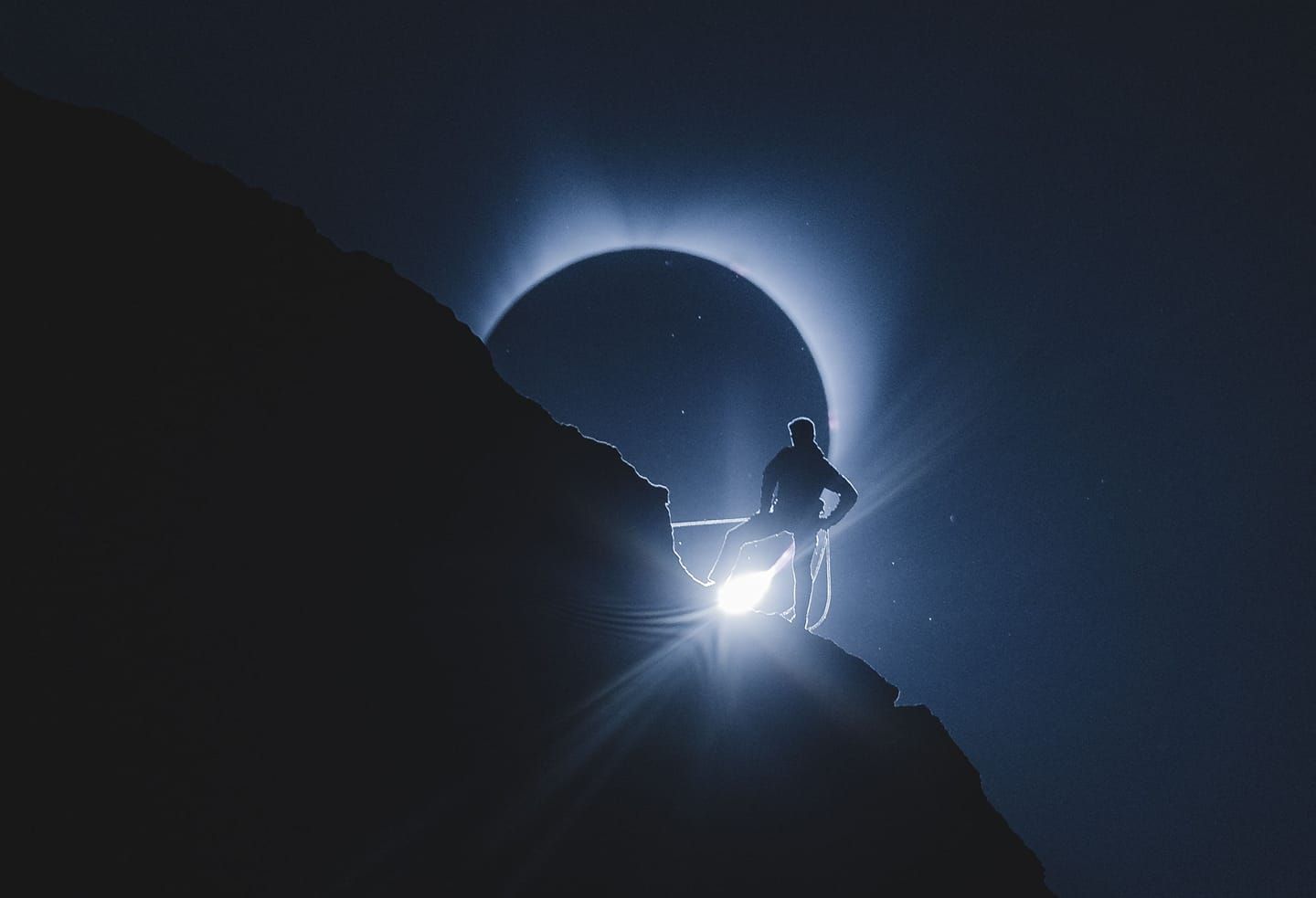Solar Eclipse FAQ & Fun Facts
Why is it harmful to look at it with naked eyes?
Contrary to popular belief, total solar eclipse is safe to look at with naked eyes. In fact, radiation during totality is less than the radiation you receive when staring at full moon. But it's the partial eclipse that's dangerous. It's kinda okay to look at the sun during a normal day, because our pupil automatically constricts and the eyelids involuntarily close due to the extreme brightness. During totality, the pupils dilate to the maximum due to the darkness. When the sun suddenly appears, it can damage the exposed retina with UV, heat and excessive blue light, causing permanent damage (solar retinopathy).
Why are some eclipses annular (ring-like) and some other total (fully covered)?
Moon revolves around earth on an elliptical orbit where it gets closer and further away from earth at different points. If eclipse occurs when it's further away, the moon seems smaller and is unable to cover the entire solar disk (that's what happened today). If eclipse happens when moon is closer to us, it looks bigger and can cover the whole solar disk.
Why do we get semi circular shadows during eclipse?
The leaves of trees (canopy) have tiny gaps through which the sun shines. Those gaps act as pinhole cameras and when something goes weird with the source of light (eclipsed sun) they form an inverted image on a screen (or a wall).
Do eclipses happen elsewhere too?
Yep! We have photos from Mars where it's moons eclipse the sun. We detect planets around other stars by observing the periodic dim in star's brightness. That's basically that planet passing between that star and us.
How can the moon even cover the sun? Why don't they just revolve in different planes?
All planets and most moons revolve aligned to more or less the same plane (called ecliptic), which is quite weird. The solar system formed when gases and rocks merged under gravity into a protoplanetary disk around a young sun: sol. The angular momentum of the initial disk is conserved throughout this process and has resulted in most planets ending up in orbits along similar planes. This has been verified in simulations where protoplanetary clouds of dust settle into orbits of few bodies after billions of years of collisions.
How are Raghu & Kethu related to eclipse?
Raghu and Kethu of astrology are the ascending and descending lunar nodes. Lunar nodes are the points where the moons orbit (slanted by 5°) crosses the Earth's orbit (ecliptic plane). These points move with respect to a fixed point in earth, which is described as the motion of two "shadow planets" Raghu and Kethu in astrology. For an eclipse to occur, sun and moon should align into one of these points. Traditionally it was beleived one of two snakes eat the sun and spit it out.
Few million years later:
After few millions of years, we would not get total solar eclipses. Because the moon is slowly moving away from earth and is getting apparently smaller and smaller. Why? Firstly, Earth spins faster (24 hours) than moon revolving around earth (30 days). This causes moon to "pull and drag" the oceans, causing tides against Earth's rotation. This slows downs earth and speeds up the moon (conservation of angular momentum of the system). As the moon speeds up, it moves futher away (gravity acting as the centripetal force implies speed and distance are inversely related) and appears smaller and smaller.
Einstein and the Eclipse
Einstein became the "rock star of the science world" after his theory was confirmed during the 1919 eclipse. His General Relativity was an outlandish theory, claiming "space and time are bound together into a 4D rubber sheet (riemman manifold) that bends around massive objects, causing other massive and non massive objects to get attracted". To prove it experimentally, Einstein proposed to observe the stars during a total eclipse. Light (from stars) is massless, hence according to Newton's model, should be unaffected by sun's gravity. According to Einstein, the paths of those light beams should bend towards the sun. We have highly accurate star maps from night time observations over centuries. But the only time we can see the stars around the sun (daytime) is a total eclipse. A team of photographers and astronomers travelled to Africa in 1919. When they recorded the star positions during the total eclipse, they found that not only the stars have MOVED towards the sun, but also they have moved by the exact same degree as Einstein calculated on paper. He skyrocketed to fame overnight and hence this eclipse ultimately made him the synonym for genius.
Feel free to correct me, or add more interesting facts.
Thanks to Pirakash for pointing out an error in (7)
First posted on Facebook: facebook.com/abarajithan11/posts/10218314533206199



